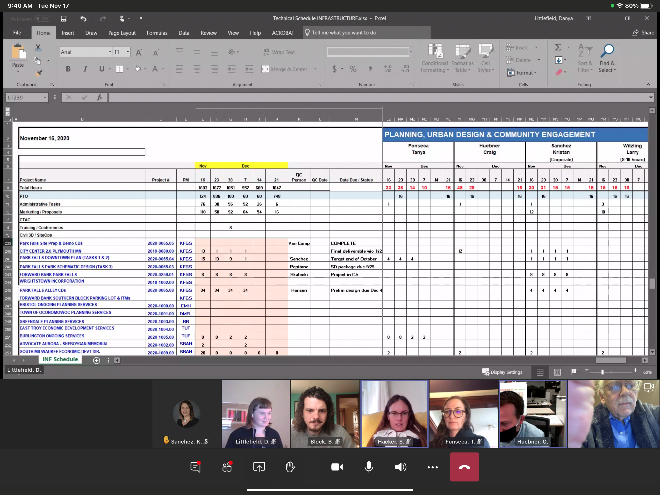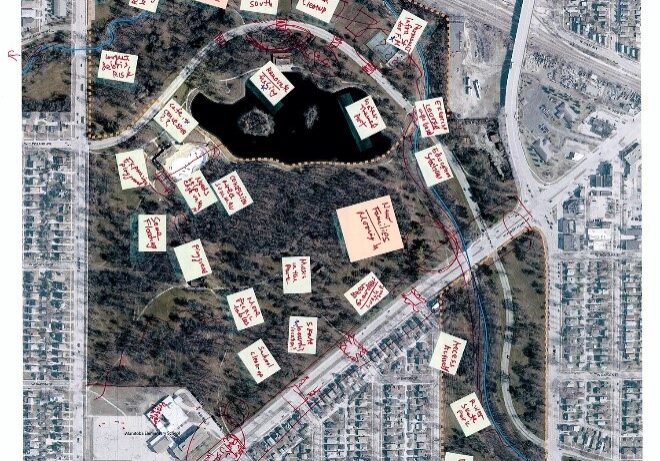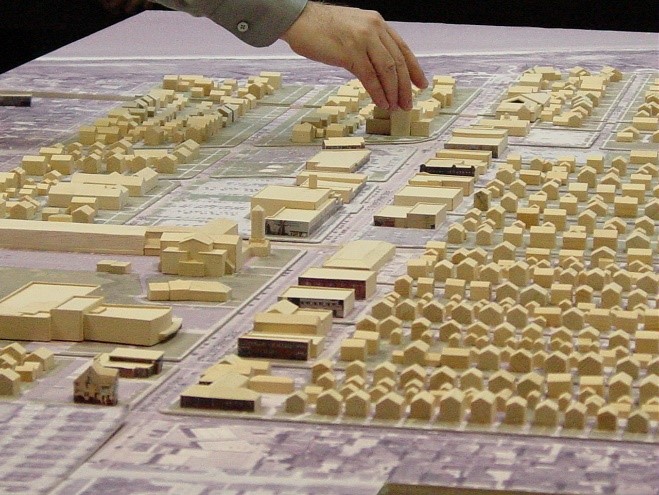What Is A “Virtual” Meeting?
Virtual online meetings have already begun to revolutionize our ability to engage the public in discussing plans and visions for their communities. Just as the telephone transformed communication with “virtual” voices, new digital software and hardware will continue to transform community dialogue. The virtual platforms of today already enable us to engage with issues and garner feedback more deeply and flexibly than what is feasible with in-person meetings. This transformation is far from over – what might the platforms of tomorrow enable?
A Lasting Change
The use of new modes of communication, forced upon us by the pandemic, will remain when the pandemic ends. We know that online meetings, especially with large groups, cost much less to implement than onsite meetings, and online logistics are improving every day. With online meetings, the costs associated with preparing venues and traveling essentially disappear. Before we use such savings to cut our budgets, however, we should consider ways to reallocate those funds and upgrade community engagement.
Broaden The Audience And Increase The Impact
Audiences for community meetings should include many more participants than what typically happens today. Planners have always known this but could ill afford the added expense. With online meetings, engaging a broader audience becomes much simpler and much more affordable. Online meetings make it easier to:
- Include people who have little spare time to attend onsite meetings (especially those that run on and on for hours)
- Reach broad interest groups (not just NIMBY citizens and those who exaggerate special interests)
- Engage families (especially those with small children that might prohibit their attendance at onsite meetings)
- Provide translations for non-English speakers (through interpreters and closed caption services)
- Bring in people with passive interest (like folks who watch council meetings on cable)
- Speak to students, teens, business owners, elected officials, people with less mobility, and those who may be our future leaders.
Make Meetings Less Contentious
Onsite meetings often draw citizens with strong emotions, especially those who fear changes in the community. Such feelings can quickly lead to angry confrontations, complicating planning decisions with partisan politics and unyielding positions. In contrast, online meetings can reduce confrontations, increase the diversity of opinions, lessen xenophobia, and maintain focus on evaluating balanced planning options. Here’s why:
- Technological separation makes it easier for strangers to converse without anxiety
- Online meetings can be easily curtailed if it looks like they may “boil over”
- Participants can maintain anonymity more easily, especially in online polls
- More staff can be involved remotely to engage in small informal group conversations and chats
- As confrontation diminishes, our ability to listen openly and creatively increases – we can apply critical thinking skills to community discussions more effectively
Include More Relevant, Detailed Knowledge
Onsite meetings give the presenters control over rapid-fire file sharing, while online meetings expand this capability to a much broader group of knowledgeable participants. In typical online meetings, many participants can share text and graphics from a variety of sources. Onsite meeting technology, however, facilitates only one dominant presenter, and the sharing of knowledge typically only goes in one direction. Here are some of the advantages we have seen in our online community meetings:
- Every participant has the means to “share your screen” - knowledge sharing promotes collaboration and drives innovation
- Collaborative decision making can consider more variables and accommodate more perspectives– a much better way to address multifactor, complex problems.
- Online meetings can easily assemble knowledge from geographically distant consultants, faster and with less expense – this is especially important for projects that cannot afford large teams
- All participants can quickly and easily drill down into detailed data with multiple online resources
- All the files, visualizations, and comments can be saved quickly through recordings, screenshots, and many other forms of recording verbal, quantitative, and visual data.
Expand Simultaneous Small Group Collaboration
Onsite meetings have historically followed one of the following formats – large audiences, open houses, or small group charrettes. Online meetings enable much more flexibility in how they are organized:
- Online software allows for quick changes from large group meetings to small group discussions using ‘rooms’ and ‘breakouts. These can be established spontaneously as needed and do not require major physical changes in room furnishings or rescheduling
- Small side groups can be organized to tackle contentious issues with less animosity (e.g. battles over multifamily housing, environmental preservation, social justice, etc.).
- Online meetings provide a major opportunity to overlap one-on-one conversations using “chat” functions and similar tools, which can occur and be recorded without interrupting the larger discussion
Reinvent The Charrette As An Online Experience
Historically, charrettes involved a small group of architects working intensely overnight. Today, charrettes have become a preferred methodology for solving complex, ill-defined problems in urban design and community development. The costs of charrettes, however, have grown exponentially. Now, with online technologies, we can plan charrettes and expand their application at much lower costs:
- Allow for simultaneous visualizations by small groups (new software is being developed every day)
- Provide visualization tools that can be used easily by both trained and untrained participants
- Schedule charrettes in sequential sessions that allows participants to “process” information between sessions
- Using recordings and file sharing, share the full flow of knowledge without overly constraining the content
Improve Face-To-Face Meetings
Face-to-face communications will always be essential. Just as digital technology transformed our use of paper and print, so too will technology change the use of traditional onsite meetings. There may not be as many onsite meetings, but they can become more valuable and impactful. This already happens with what might be called “hybrid” meetings in which some participants are online, and some are onsite. As with all innovations in communication, the distinct advantages and shortcomings of onsite, online, and hybrid meetings will become more apparent as we gain experience and try new techniques.
Can Planners Handle Change?
None of these opportunities will materialize without proper training and management. We need to learn and master new techniques and advocate for the development of useful technologies. Planners face a huge challenge and opportunity – let’s plan for it!
Continue the Conversation
GRAEF’s Planning + Urban Design Group looks forward to discussing these ideas and identifying objectives and actions with each of our clients, communities, and colleagues. Please let us know your thoughts and if you would like to continue the conversation.
Up close and personal - although we are more distant physically, the up close imagery of laptop camera creates a more personal experience between participants.
Social experience - while we can replicate larger numbers of people online, we need to find ways of creating the positive social energy of community gathering. some software creates an “audience” view, but it often requires a meeting hall.
Sharing critical details - in-depth examination of details has become more important in all planning projects. Online meetings allow for much faster, convenient, and user-friendly sharing from multiple websites and servers.
The ubiquitous post-it - while Post-it Notes are easily used for both onsite and online meetings, online post-its can be easily recorded, rearranged, and emphasized.
Roundtables - onsite roundtables can be easily replicated, and improved, using online breakrooms and subgroups.
Online onsite charrettes - unlike virtual reality, which is not easily shared or manipulated by non-professionals, “televised” acts of physical concept development using 3D models can work both online and onsite.
Onsite public recognition - onsite meetings and media events are essential for community engagement. This event involved the governor, mayor, council president and other key elected officials.






